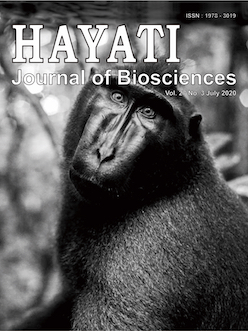Antagonistic Activity of Fungal Endophytes Isolated from Garcinia atroviridis against Colletotrichum gloeosporioides
Abstract
The extensive use of synthetic fungicides in controlling plant disease generates detrimental impacts on the environment and human health. In response to this problem, an alternative method was developed, known as biological control using antagonistic microorganisms. Since investigation on fungal endophytes of Garcinia atroviridis is still unclear, it was chosen for the study. The aim of the present work was to evaluate biocontrol potential of endophytic fungi against Colletotrichum gloeosporiodes, a phytopathogen that caused anthracnose disease. A total of 92 endophytic fungi were isolated from different tissue parts of Garcinia atroviridis including leaves, petioles, branches, and fruits. Results demonstrated that, most of endophytic fungal isolates showed some inhibitory action over the growth of C. gloeosporiodes during dual culture growth. Endophyte isolate F14 showed the highest antagonistic activity against Colletotrichum gloeosporiodes with 67.38% percentage inhibition radial growth (PIRG). However, 7 out of 92 isolates showed no inhibitory effect against Colletotrichum gloeosporiodes. In conclusion, endophytic fungi isolated from G. atroviridis indicate the potential as biocontrol agents. It is hoped that the finding of isolated endophytic fungi in this study with antagonistic activity against anthracnose pathogen may be used in biocontrol programmes of plant disease in the region.
Downloads
HAYATI J Biosci is an open access journal and the article's license is CC-BY-NC. This license lets others distribute, remix, tweak, and build upon author's work, as long as they credit the original creation. Authors retain copyright and grant the journal/publisher non exclusive publishing rights with the work simultaneously licensed under a https://creativecommons.org/


















.png) IPB University
IPB University Department of Biology
Department of Biology The Indonesian Biological Society
The Indonesian Biological Society 

